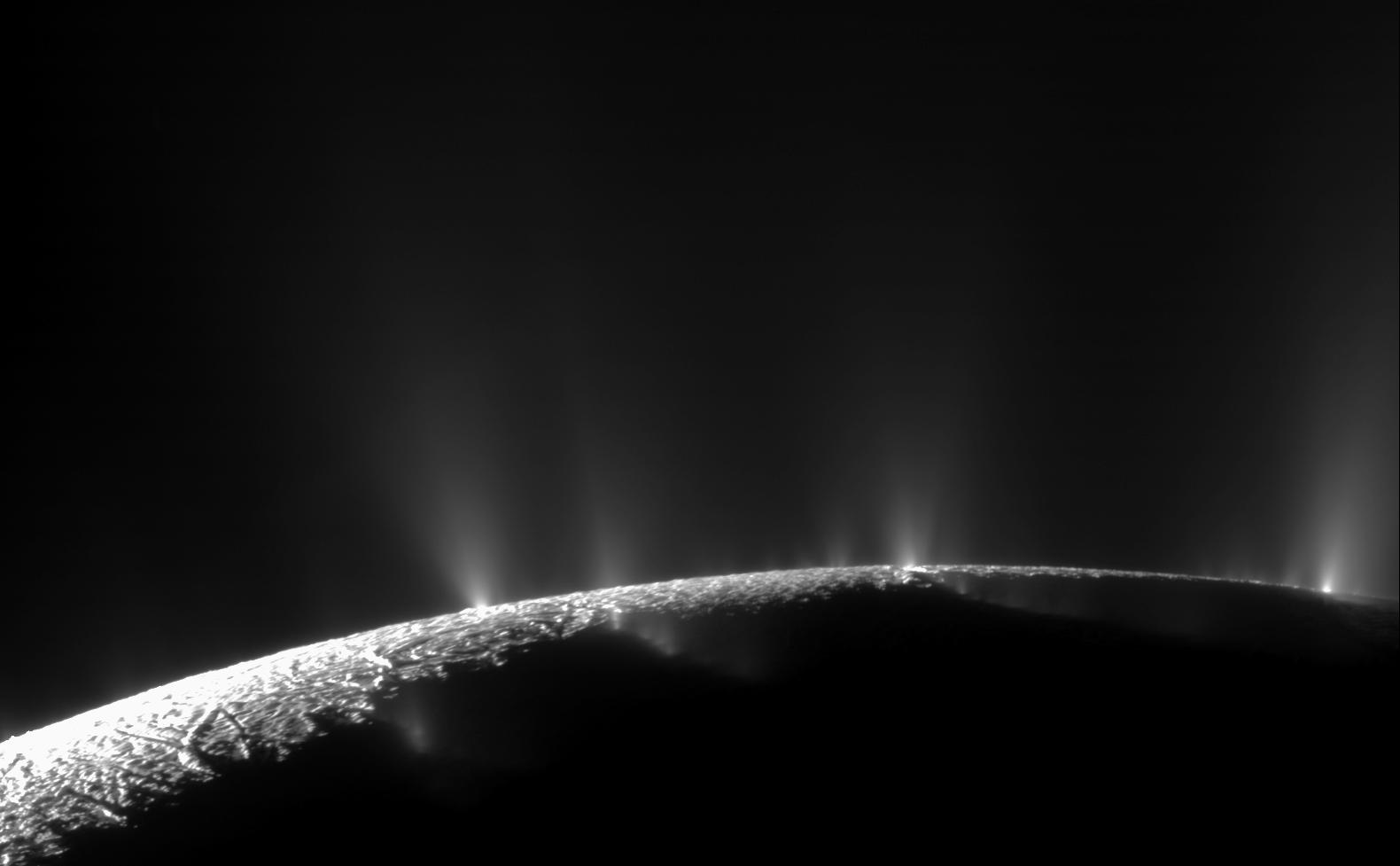5 min read
The most recent spacecraft telemetry was acquired on Feb. 23 from the Deep Space Network tracking complex at Canberra, Australia. The Cassini spacecraft is in an excellent state of health and all subsystems are operating normally. Information on the present position and speed of the Cassini spacecraft may be found on the "Present Position" page at: http://saturn.jpl.nasa.gov/mission/presentposition/.
Wednesday, Feb. 17 (DOY 048)
An encounter strategy meeting was held today to cover the period between Mar. 2 and Apr. 6, the Rhea 2 and Dione 2 flybys, and maneuvers 239-241.
Saturn's moon Calypso was Astronomy Picture of the Day today. Check it out here::
http://antwrp.gsfc.nasa.gov/apod/ap100217.html
Science this week included a Visual and Infrared Mapping Spectrometer global dynamics mosaic of Saturn's equator, a Magnetometer calibration, and a Radio Science boresight calibration. Imaging Science (ISS) took multiple images of Iapetus, and observed the clouds of Titan. The Composite Infrared Spectrometer (CIRS) created a mid-infrared thermal map of Saturn to determine upper troposphere and tropopause temperature, and measured oxygen compounds in Saturn's stratosphere. The Cassini Plasma Spectrometer spent approximately 17.5 hrs participating in a Magnetospheric and Plasma Science survey.
The Exhibit "400 Years of Discovery: From Galileo to the Outer Planets" commemorating the anniversary of Galileo's discovery and highlighting the exploration of the Outer Solar System including Cassini will debut at the 41st Lunar and Planetary Science Conference, The Woodlands, Texas, March 1-5, 2010. The resident Cassini EPO astronomer has done a special related podcast that students and the public can download for free on iTunes. It is available at https://www.jpl.nasa.gov/video/details.php?id=888, under What's Up For February - 400th Anniversary of Galilean Moon discovery, which includes NASA educational content and a two page flier on Galileo. The NASA/Itunes link is here:
http://www.nasa.gov/multimedia/podcasting/whatsup_index.html
Wired Magazine, one of Cassini's Webby competitors for best science website, admitted they love one of "our" moons. "Enceladus has to be one of the most intriguing objects in the solar system. It's definitely our favorite of Saturn's 62 moons here at Wired Science." http://www.wired.com/wiredscience/2010/02/gallery-enceladus/ The Wired piece was most likely a direct descendant of Cassini's Science League feature.
Thursday, Feb. 18 (DOY 049)
An AACS Periodic Engineering Maintenance (PEM) activity occurred today. Performed approximately every 90 days, the PEM exercises a combination of the Engine Gimbal Actuators and the backup Reaction Wheel Assembly (RWA).
Uplink Operations sent real time commands to the spacecraft today to perform a CIRS noise test. The files patched the CIRS flight software to perform the noise test, and then took data during a deep space calibration observation and a Saturn CompSit prime observation. At the end of the observations the patch returned the instrument state to the current flight software version. The activity ran from 051T21:33:00 to 053T04:49:05. The purpose of the patch is to see if changes in the software can eliminate internal instrument generated noise.
Friday, Feb. 19 (DOY 050)
A 3-D image of the Saturnian moon Prometheus has been posted to the Cassini Web page. The news note that goes with this image called "Behold the Violent History of Saturn's White Whale Moon" explains that this view, which resembles the white whale Moby Dick, exposes the irregular shape and circular surface scars on Prometheus, pointing to a violent history. This image looks different from the "egg-cellent" raw image of Prometheus obtained on Jan. 27 because that view shows one of the short ends of the oddly shaped moon. In this image, the sun illuminates Prometheus at a different angle, making the moon's elongated body visible.
http://saturn.jpl.nasa.gov/news/cassinifeatures/feature20100219/
Monday, Feb. 22 (DOY 053):
All teams submitted Port 3 files for S60 and Port 2 files for S61 as part of two Science Operations Plan processes. Each set of files will be merged tomorrow and then sent back out to the teams for review.
Uplink Operations (ULO) radiated 14 Instrument Expanded Block files to the spacecraft today in support of sequence S58. The background sequence will go up Friday, and the sequence will begin execution on Monday, Mar. 1.
ULO has received an absolute timed real-time command file from the Cosmic Dust Analyzer instrument team. Starting on DOY-061T16:00, the commands will customize the instrument's visibility to bigger particles during the upcoming Rhea flyby on Mar. 2 and the following periapse passage. The command approval meeting for this file is scheduled for Thursday, Feb. 25.
Tuesday, Feb. 23 (DOY 054)
The monthly Cassini-Huygens Analysis and Results of the Mission (CHARM) teleconference for February was held today. The topic: Boom and Bust Cycles in Saturn's Rings. The presentation package is now on line here:
http://saturn.jpl.nasa.gov/video/products/MultimediaProductsCharm/
Orbit Trim Maneuver (OTM) #237 was performed today. This was the apoapsis maneuver setting up for the Rhea 2 encounter on March 2. The Reaction Control Subsystem burn began at 9:44 AM. Telemetry immediately after the maneuver showed a burn duration of 8.75 seconds, giving a delta-V of 15.24 mm/s. All subsystems reported nominal performance after the maneuver.
Newly released images from last November's flyby of Enceladus revealed a forest of new jets spraying from prominent fractures crossing the south polar region, and yielded the most detailed temperature map to date of one fracture. The new images also include the best 3-D image ever obtained of a "tiger stripe," and views of regions not well mapped previously on Enceladus, including a southern area with crudely circular tectonic patterns.







